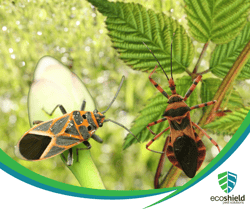 In the complicated world of household pests, confusion can often arise, especially when it comes to distinguishing between boxelder bugs and kissing bugs. Homeowners frequently find themselves puzzled by these two insects, as their similar appearances and indoor activity can lead to mistaken identities. In this blog post, we delve into the nuances that set boxelder bugs and kissing bugs apart, highlighting their unique characteristics, behaviors, and potential implications for homeowners. Understanding these differences is crucial for effective pest management and peace of mind in your home, as each insect comes with its own set of quirks and challenges. So, let's unravel the mystery surrounding these two bugs and equip you with the knowledge needed to identify, differentiate, and address these unwanted houseguests.
In the complicated world of household pests, confusion can often arise, especially when it comes to distinguishing between boxelder bugs and kissing bugs. Homeowners frequently find themselves puzzled by these two insects, as their similar appearances and indoor activity can lead to mistaken identities. In this blog post, we delve into the nuances that set boxelder bugs and kissing bugs apart, highlighting their unique characteristics, behaviors, and potential implications for homeowners. Understanding these differences is crucial for effective pest management and peace of mind in your home, as each insect comes with its own set of quirks and challenges. So, let's unravel the mystery surrounding these two bugs and equip you with the knowledge needed to identify, differentiate, and address these unwanted houseguests.
What are Boxelder Bugs?
Boxelder bugs, scientifically known as Boisea trivittata, are small insects belonging to the true bug order Hemiptera. These bugs are distinguishable by their distinct black and red markings, creating a striking appearance that often captures homeowners' attention. Measuring around half an inch in length, boxelder bugs possess a flat, elongated shape with six legs and prominent antennae. As their name alludes to, these insects have an affinity for boxelder trees (Acer negundo), although they are also commonly found on maple and ash trees. While primarily outdoor dwellers, boxelder bugs become more conspicuous to homeowners during the fall and winter months when they seek shelter indoors to escape the cooler temperatures.
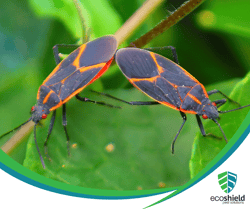 Regarding biology, boxelder bugs undergo incomplete metamorphosis, progressing through egg, nymph, and adult stages. The eggs are laid on host trees, and once hatched, the nymphs resemble smaller versions of the adults but lack wings. Boxelder bugs feed on the sap of their preferred host trees, using their piercing-sucking mouthparts to extract the nourishing fluids. While these bugs don't pose a direct threat to the health of the trees, their feeding activity can cause cosmetic damage, leaving behind discolored spots on the foliage.
Regarding biology, boxelder bugs undergo incomplete metamorphosis, progressing through egg, nymph, and adult stages. The eggs are laid on host trees, and once hatched, the nymphs resemble smaller versions of the adults but lack wings. Boxelder bugs feed on the sap of their preferred host trees, using their piercing-sucking mouthparts to extract the nourishing fluids. While these bugs don't pose a direct threat to the health of the trees, their feeding activity can cause cosmetic damage, leaving behind discolored spots on the foliage.
One of the primary challenges for homeowners arises when boxelder bugs invade indoor spaces, seeking warmth during colder seasons. Though generally considered to be harmless, their presence can be a nuisance as they congregate in large numbers on windows, walls, and other surfaces. Additionally, when crushed or disturbed, boxelder bugs emit a foul odor that can be extremely unpleasant to homeowners and their families. While they don't bite humans or cause structural damage to homes, the sheer volume of boxelder bugs invading living spaces can be a source of frustration for homeowners and can be understandably unnerving.
Boxelder bugs are commonly found throughout the United States, primarily in the eastern and western parts. They are widespread and can be seen in various regions, including the Midwest, Northeast, and West Coast. Boxelder bugs often inhabit areas with boxelder and silver maple trees, as these are their preferred feeding and breeding grounds. While they can be found in a wide range of environments, they are particularly abundant in areas where their host trees grow.
What are Kissing Bugs?
Kissing bugs, scientifically known as Triatominae, are a group of blood-feeding insects known for their association with Chagas disease, a parasitic infection caused by the protozoan Trypanosoma cruzi. These bugs, ranging from about half an inch to an inch in size, typically exhibit a dark-colored, elongated body with a distinctive cone-shaped head. Recognizable by their reddish or orange markings and flattened appearance, kissing bugs earned their name due to their habit of biting humans, particularly around the face and lips, as they feed on blood. Unlike mosquitoes, kissing bugs feed by piercing the skin with their mouthparts and then lapping up the blood that pools at the bite site (gross, we know.)
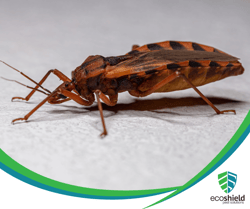 Like boxelder bugs, kissing bugs undergo incomplete metamorphosis, with eggs hatching into nymphs that resemble smaller versions of the adults. The nymphs go through several stages of development, gradually acquiring the full characteristics of fully mature insects. These bugs primarily feed on the blood of mammals, birds, and reptiles. While the bite itself is not usually painful, the potential transmission of Chagas disease raises concerns for humans. When feeding, kissing bugs may inadvertently deposit the parasite-infected feces near the bite wound, allowing the parasite to enter the bloodstream when the person inevitably scratches or rubs the bite site.
Like boxelder bugs, kissing bugs undergo incomplete metamorphosis, with eggs hatching into nymphs that resemble smaller versions of the adults. The nymphs go through several stages of development, gradually acquiring the full characteristics of fully mature insects. These bugs primarily feed on the blood of mammals, birds, and reptiles. While the bite itself is not usually painful, the potential transmission of Chagas disease raises concerns for humans. When feeding, kissing bugs may inadvertently deposit the parasite-infected feces near the bite wound, allowing the parasite to enter the bloodstream when the person inevitably scratches or rubs the bite site.
For homeowners, the presence of kissing bugs can be unsettling due to the health risks associated with Chagas disease. While Chagas disease is more prevalent in certain regions of the Americas, cases have been reported in the United States, prompting vigilance. While the entry of kissing bugs into homes is not uncommon, it's important to note that not all kissing bugs carry the parasite responsible for Chagas disease. However, the risk exists, and homeowners are advised to take preventive measures to control potentially kissing bug populations within their homes.
Kissing bugs are found in various regions of the United States, but they are most commonly associated with the southern and southwestern parts of the country. Kissing bugs can be found in states such as Texas, Arizona, New Mexico, and California. They are attracted to warmer climates and are often present in areas with a combination of wildlife, domestic animals, and human habitation. While their presence can vary from state to state, these bugs are generally more prevalent in the southern regions of the United States.
Why are Boxelder Bugs and Kissing Bugs Often Mistaken For One Another?
Boxelder bugs and kissing bugs are often mistaken for one another due to several shared characteristics and occasional similarities in their appearances. Both insects belong to the larger category of true bugs and share a somewhat elongated and flattened body shape. Additionally, their coloration features shades of red or orange, which can contribute to confusion, especially when observed at a glance. Another factor contributing to the mix-up is their occasional intrusion into human living spaces, seeking shelter during different seasons. Homeowners may encounter either of these bugs indoors, particularly during the fall and winter when boxelder bugs seek warmth, and this shared behavior can blur the distinction between the two for those unfamiliar with entomology. That said, it's crucial to recognize that despite these superficial similarities, boxelder bugs and kissing bugs differ significantly in terms of biology, behavior, and potential impact on homeowners, with kissing bugs posing health risks due to their association with Chagas disease.
Why and How do Boxelder Bugs and Kissing Bugs End up in Homes?
Both boxelder bugs and kissing bugs share a common motivation for entering homes - the search for shelter and warmth. In the case of boxelder bugs, this behavior is particularly pronounced during the fall and winter when cooler temperatures prompt them to seek refuge indoors. They are drawn to the warmth inside homes and often find their way through cracks, gaps, or other openings in the structure. Boxelder bugs, however, do not pose a direct threat to humans but can become a nuisance in large numbers, congregating on windows and walls.
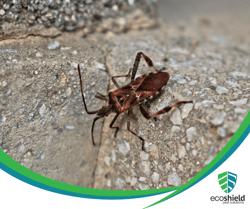 On the other hand, kissing bugs enter homes driven by a combination of factors. Seeking shelter from the elements and a desire for warmth are primary motivations, similar to boxelder bugs. However, kissing bugs also have a distinct interest in finding hosts for blood meals. Attracted by the warmth and carbon dioxide emitted by mammals, including humans, kissing bugs may enter homes through openings or attracted by artificial lights. Once inside, they may hide in cracks or other secluded areas during the day, emerging at night to feed on the blood of sleeping hosts. This behavior not only makes them a potential household nuisance but also raises concerns due to their association with Chagas disease.
On the other hand, kissing bugs enter homes driven by a combination of factors. Seeking shelter from the elements and a desire for warmth are primary motivations, similar to boxelder bugs. However, kissing bugs also have a distinct interest in finding hosts for blood meals. Attracted by the warmth and carbon dioxide emitted by mammals, including humans, kissing bugs may enter homes through openings or attracted by artificial lights. Once inside, they may hide in cracks or other secluded areas during the day, emerging at night to feed on the blood of sleeping hosts. This behavior not only makes them a potential household nuisance but also raises concerns due to their association with Chagas disease.
In summary, the shared quest for shelter and warmth is a common thread between boxelder bugs and kissing bugs when it comes to entering homes. While boxelder bugs are mostly a nuisance, kissing bugs bring an added concern due to their blood-feeding habits and the potential transmission of Chagas disease. Homeowners should be aware of the distinct characteristics of each insect to implement appropriate preventive measures and address infestations effectively for both safety and peace of mind.
How Can I Prevent Boxelder Bugs and Kissing Bugs in my Home?
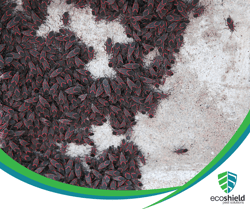 To prevent boxelder bugs and kissing bugs from entering your home, several measures can be implemented. Firstly, seal any potential entry points such as cracks, gaps, and openings in windows, doors, and the foundation. This helps to create a barrier and minimize the likelihood of these insects finding their way indoors. Additionally, installing screens on windows and doors can serve as an effective deterrent while still allowing ventilation.
To prevent boxelder bugs and kissing bugs from entering your home, several measures can be implemented. Firstly, seal any potential entry points such as cracks, gaps, and openings in windows, doors, and the foundation. This helps to create a barrier and minimize the likelihood of these insects finding their way indoors. Additionally, installing screens on windows and doors can serve as an effective deterrent while still allowing ventilation.
Maintaining a well-kept outdoor environment is crucial. Remove any potential hiding places for bugs near your home, such as piles of leaves, firewood, or debris. Properly seal and store firewood away from the house, as it can attract both types of bugs. Regularly inspect and repair any damaged window screens or weather stripping to ensure a tight seal.
For boxelder bugs specifically, consider removing any female boxelder trees (Acer negundo) in close proximity to your home, as these are a preferred host for the bugs. It is also recommended that you consult with a pest control professional for targeted treatments and advice on managing boxelder bug populations.
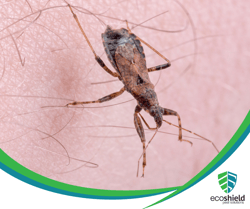 In the case of kissing bugs, minimize outdoor lighting around your home, especially at night, as these bugs are attracted to light sources. It's important to be cautious when letting pets in and out of the house to prevent bugs from hitchhiking inside. Conduct thorough inspections of your home's exterior and interior periodically, especially in areas where these bugs are more likely to hide.
In the case of kissing bugs, minimize outdoor lighting around your home, especially at night, as these bugs are attracted to light sources. It's important to be cautious when letting pets in and out of the house to prevent bugs from hitchhiking inside. Conduct thorough inspections of your home's exterior and interior periodically, especially in areas where these bugs are more likely to hide.
Maintaining cleanliness indoors, reducing clutter, and promptly addressing any cracks or gaps in walls, floors, or ceilings can also contribute to an environment less conducive to bug infestations. While these preventive measures cannot guarantee complete avoidance of boxelder bugs and kissing bugs, they significantly reduce the risk of infestations and help create an inhospitable environment for these insects.
Due to the inherent risk kissing bugs pose, it is highly recommended that homeowners utilize the expertise of a professional pest control company to help manage pest populations to protect both themselves and their families.
Can EcoShield Prevent and Treat Boxelder Bugs and Kissing Bugs?
Yes! EcoShield offers year-round protection against a variety of common pests, including both boxelder bugs and kissing bugs. We highly recommend homeowners safeguard their homes and health against both insects with a comprehensive pest prevention strategy like the Shield Home Protection Plan. Especially in the case of kissing bugs, your health and safety is always our top priority. To prevent or remove boxelder bugs or kissing bugs in your home, give EcoShield a call or fill out the form on this page today.